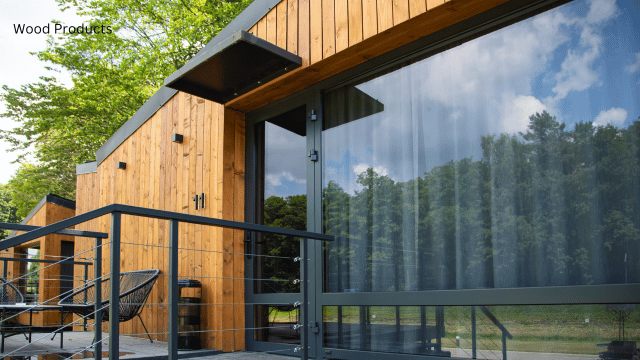As a homeowner, it’s only natural to want your floors to look their best. Over time, however, they can become dull and dirty, losing their original shine and beauty. This is where floor polishing comes in. Floor polishing is a process that can restore the luster of your floors and give them a fresh, new look. In this article, I will guide you through the steps of floor polishing, from recognizing the signs that your floors need polishing to choosing the right products and methods. So, let’s dive right in and discover how you can bring back the shine to your dull and dirty floors.
Signs that Your Floors Need Polishing
Before you start the floor polishing process, it’s important to determine whether your floors actually need polishing. There are a few telltale signs that indicate it’s time to give your floors some TLC. First, take a close look at the surface of your floors. Do you notice scratches, scuff marks, or a lackluster appearance? These are signs that your floors have lost their shine and need polishing. Additionally, if your floors are difficult to clean or have stains that are hard to remove, it’s a good indication that they could benefit from a polishing treatment. By recognizing these signs, you can address the problem proactively and restore the beauty of your floors.
Benefits of Floor Polishing
Floor polishing offers a range of benefits that go beyond just improving the appearance of your floors. One of the main advantages is that polishing helps to protect the surface of your floors from further damage. The polishing process creates a protective barrier that can prevent scratches, stains, and other forms of wear and tear. Additionally, polished floors are easier to clean and maintain, as the smooth surface allows for effortless removal of dirt and grime. Moreover, floor polishing can enhance the overall value and appeal of your home. Whether you’re planning to sell your property or simply want to create a more inviting living space, polished floors can make a significant difference.
Different Types of Floor Polishing Methods
When it comes to floor polishing, there are various methods available, each suitable for different types of flooring materials. The most common methods include buffing, burnishing, and diamond grinding. Buffing is typically used for light polishing and involves the use of a buffing machine with a rotating pad. Burnishing, on the other hand, is a more aggressive method that uses a high-speed machine to create a glossy finish. Diamond grinding is reserved for more severe cases, where the floors have deep scratches or stains. This method uses diamond-embedded discs to remove the top layer of the floor and reveal a fresh, new surface. Understanding the different methods will help you choose the most suitable one for your specific needs.
Choosing the Right Products for Floor Polishing
In addition to selecting the appropriate method for floor polishing, it’s essential to choose the right products to achieve the best results. The products you use will depend on the type of flooring material you have. For example, if you have hardwood floors, you’ll need to use a polish specifically designed for wood. Similarly, if you have tile or stone floors, you’ll need a polish that is suitable for those surfaces. It’s important to read the labels of the products you purchase and ensure they are compatible with your type of flooring. Additionally, consider using eco-friendly and non-toxic products to minimize any potential harm to your health and the environment.
Step-by-Step Guide to Floor Polishing
Now that you have a good understanding of the signs, benefits, methods, and products for floor polishing, let’s dive into a step-by-step guide to help you through the process. Keep in mind that the specific steps may vary depending on the method and products you choose. Here is a general outline to get you started:
- Preparation: Clear the area of any furniture or obstacles, and thoroughly clean the floors to remove dirt and dust.
- Surface evaluation: Inspect the floors for any deep scratches, stains, or other issues that may require additional attention.
- Choose the method: Select the appropriate method for floor polishing based on the condition of your floors and the results you desire.
- Gather the tools: Gather all the necessary tools and equipment, such as a buffer, burnisher, or diamond grinding machine, along with the appropriate pads or discs.
- Apply polish: Follow the instructions on the polish product and apply it evenly to the floor, working in small sections.
- Polishing process: Use the chosen method to polish the floor, making sure to cover the entire surface area.
- Finishing touches: After the initial polishing is complete, inspect the floors for any missed spots or imperfections and address them accordingly.
- Clean up: Clean up any residue from the polishing process and allow the floors to dry completely before moving furniture back into the room.
Maintenance Tips to Keep Your Floors Polished
Once you’ve gone through the process of floor polishing, it’s important to maintain the shine and beauty of your floors. Here are some maintenance tips to help you keep your floors polished for the long term:
- Regular cleaning: Regularly sweep or vacuum your floors to remove dirt and debris that can cause scratches or dull the surface.
- Avoid harsh chemicals: Use gentle cleaning solutions that are specifically formulated for your type of flooring to prevent damage.
- Protective measures: Place doormats at entrances to minimize the amount of dirt and grit that gets tracked onto your floors.
- Furniture pads: Attach felt or rubber pads to the legs of your furniture to prevent scratches when moving or rearranging items.
- Prompt spill cleanup: Clean up spills immediately to prevent stains and damage to the floor surface.
- Avoid excessive moisture: Use a damp mop for cleaning, but avoid excessive water that can seep into the floor and cause warping or damage.
- Regular maintenance: Schedule regular maintenance and touch-up polishing to keep your floors looking their best.
DIY Floor Polishing vs. Hiring Professionals
Now that you know the steps and maintenance tips for floor polishing, you may be wondering whether to tackle the task yourself or hire professionals. The decision ultimately depends on your budget, time, and level of expertise. DIY floor polishing can be a cost-effective option if you have the necessary equipment and feel confident in your abilities. However, keep in mind that certain methods, such as diamond grinding, may require specialized machinery and skills. Hiring professionals can ensure a high-quality result, especially for more complex polishing needs. Professionals have the expertise and experience to handle different types of floors and can recommend the best method and products for your specific situation.
Common Mistakes to Avoid When Floor Polishing
While floor polishing can revitalize your floors, it’s important to avoid common mistakes that can lead to unsatisfactory results or damage. Here are a few mistakes to steer clear of during the floor polishing process:
- Skipping preparation: Failing to properly prepare the floors by cleaning and removing obstacles can hinder the effectiveness of the polishing process.
- Using the wrong products: Using products that are not intended for your specific type of flooring can result in damage or an undesirable finish.
- Applying too much polish: Overapplying polish can lead to a sticky residue that attracts dirt and requires additional cleaning.
- Neglecting maintenance: Failing to implement regular maintenance practices can quickly diminish the effects of floor polishing.
- Rushing the process: Taking shortcuts or rushing through the steps of floor polishing can compromise the quality of the finish.
Conclusion
Floor polishing is a valuable process that can transform your dull and dirty floors into beautiful, lustrous surfaces. By recognizing the signs that your floors need polishing, choosing the right method and products, and following a step-by-step guide, you can achieve impressive results. Remember to maintain your floors properly to prolong the shine and beauty. Whether you choose to tackle the task yourself or hire professionals, floor polishing is a worthwhile investment that can enhance the overall appeal and value of your home. So, don’t let your floors continue to look lackluster – restore their luster and bring back their natural beauty with floor polishing.


